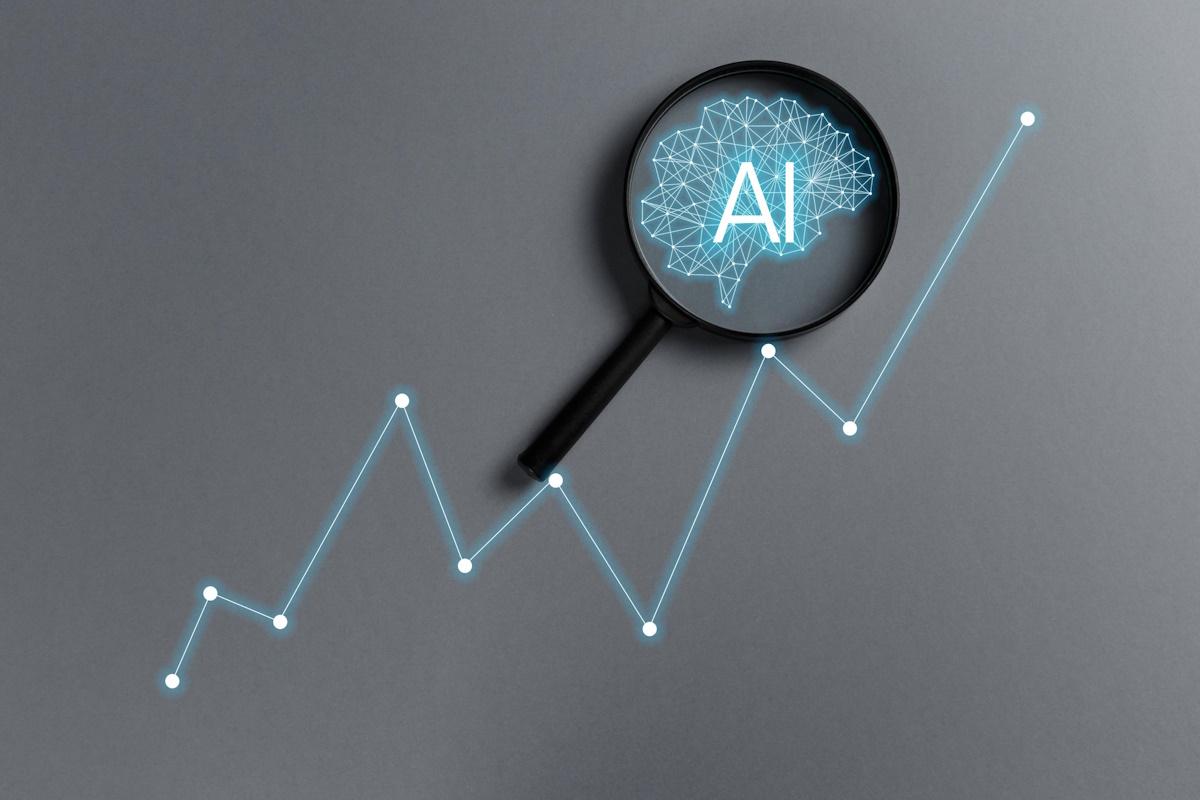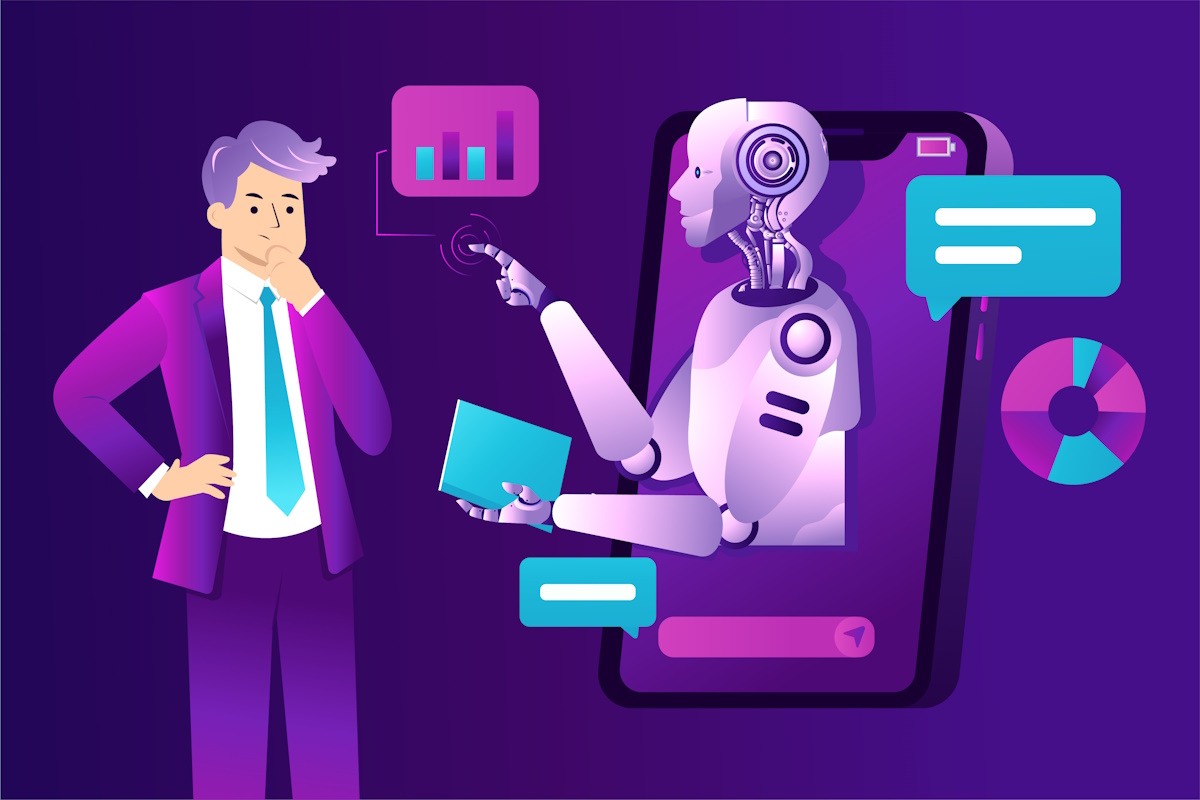As we move towards 2025, artificial intelligence (AI) continues to evolve at a remarkable pace. Business owners in various sectors must stay informed about these changes to adapt and thrive. What are the leading AI trends you need to be aware of? The following sections will provide insight into the key developments influencing the tech world.

Contents
1. Enhanced Automation and Process Optimization
Automation is not new; however, the integration of AI takes it to another level. With advanced machine learning algorithms, businesses can streamline operations, reduce costs, and improve efficiency. AI-powered robots and software can now handle repetitive tasks, freeing human resources for more strategic work.
This transformation is particularly evident in industries such as manufacturing, logistics, and customer service. In 2025, expect automation to become even more sophisticated—showing not just speed, but adaptability. Companies leveraging this can expect to see significant improvements in productivity.
1.1 Robotic Process Automation (RPA)
Robotic Process Automation is a sub-field increasingly intersecting with AI. It allows businesses to program software to perform monotonous tasks such as data entry or invoice processing. By 2025, RPA powered by AI will enable businesses to personalize customer interactions, leading to a more seamless user experience.
The use of RPA can lead to substantial savings—both in time and money. This means business owners will need to look for an AI Development Company in the USA that can tailor-fit AI solutions for their unique operational challenges.
1.2 AI in Supply Chain Management
AI is also playing a crucial role in optimizing supply chain operations. By analyzing data trends, it helps predict demand, manage inventory, and optimize logistics. These functionalities contribute to providing excellent customer service efficiently. In 2025, businesses that ignore AI in their supply chain strategies could risk falling behind competitors.
Investing in AI will enable better decision-making. Rather than waiting for data analysis, business leaders can make informed choices based on real-time data analytics. This will help mitigate risks associated with inventory oversupply and shortages.
2. AI in Customer Experience
Customer experience (CX) has emerged as a critical differentiator in business strategy. As we near 2025, AI is set to reshape how businesses engage with customers, enhancing satisfaction and loyalty. The pace at which companies adopt AI-driven customer experience tools will determine their market viability.
AI tools can analyze customer interactions to provide personalized recommendations, tailored marketing, and round-the-clock customer support. This capability allows businesses to anticipate customer needs, which in turn fosters stronger relationships.
2.1 Chatbots and Virtual Assistants
Chatbots and virtual assistants represent a significant leap in AI technology. They are able to communicate with users through natural language processing, making interactions smooth and intuitive. By 2025, nearly every organization will use AI-powered chatbots as part of their customer service strategy.
These tools not only resolve customer queries but can also gather valuable data on consumer behavior and preferences. The insights generated can be used to refine products and services effectively.
2.2 Predictive Analytics for Customer Insights
Predictive analytics is another area where AI shines. It leverages historical data to forecast future customer behaviors. Business owners must recognize that understanding these patterns can significantly improve marketing strategies and customer retention. Predictions will empower companies to tailor their approaches more effectively.
As this technology matures, the quality of insights derived from predictive analytics should also enhance. By 2025, real-time analytics will become essential as marketing campaigns increasingly depend on data-driven decisions.
3. AI and Cybersecurity
Cybersecurity remains a top priority for business leaders. As threats become more sophisticated, traditional methods may no longer suffice. AI is becoming an essential ally in the battle against cyber threats. By 2025, organizations that embrace AI-driven security measures will likely see significant advantages over those that rely solely on human oversight.
AI can monitor network traffic, identify anomalies, and respond to potential threats in real time. It enables proactive threat detection and rapid incident response, which are critical in today’s digital landscape.
3.1 AI in Threat Detection
The traditional methods of threat detection often miss advanced persistent threats. AI algorithms can analyze vast amounts of data to spot unusual patterns that signify potential breaches. By 2025, businesses that integrate AI into their cybersecurity strategies should notice a considerable reduction in security breaches and incidents.
Incorporating machine learning into security protocols means that these systems will constantly learn and evolve. This adaptability is crucial in a world where cybercriminals are continuously changing tactics.
3.2 Automated Response Systems
In addition to detection, AI can automate response strategies. If a threat is identified, AI systems can initiate response protocols without waiting for human intervention. This can minimize damage and expedite recovery times significantly.
As organizations adopt these automated response systems, it is vital to maintain oversight. However, the blend of human intuition and AI efficiency can serve as a powerful defense mechanism against growing cyber threats.
4. AI Ethics and Governance
With the rapid advancement of AI comes the necessity to address ethical considerations. Questions such as data privacy, algorithmic bias, and transparency are more pertinent than ever. As we approach 2025, it becomes essential for businesses to understand the implications of AI on society and take proactive measures to mitigate risks.
Developing ethical AI systems will not only build trust among consumers but also improve brand loyalty. Businesses that embrace ethical guidelines will be better positioned in sustainability discussions, affecting long-term success.
4.1 Establishing Ethical AI Frameworks
Creating ethical AI frameworks involves evaluating how algorithms are designed, what data is used, and how outcomes are generated. Businesses should not only focus on profitability but also on the social impacts of their AI applications. In doing so, they ensure technology delivers value without compromising human dignity.
Consulting diverse stakeholders in establishing these frameworks can lend credibility. Collaborative dialogues with ethicists, technologists, and communities can form well-rounded policies that prioritize ethical considerations.
4.2 Transparency in AI Algorithms
Transparency in AI algorithms is not merely a best practice; it will likely become a regulatory requirement by 2025. The need for clear explanations of how AI reaches decisions is crucial for public trust. Businesses must invest in technologies that allow greater insight into their AI operations.
Transparency ensures accountability. When algorithms are open to scrutiny, businesses not only enhance their credibility but also proactively address potential biases or ethical dilemmas.
5. The Future of AI-Driven Business Models
The advent of AI has ushered in a new era of business models. By 2025, businesses will increasingly adopt AI-centric models that leverage data analytics for strategic advantages. Current profit models may shift, as AI informs budgeting, resource allocation, and market positioning.
With an emphasis on data, companies that capitalize on AI-driven insights will prevail. By completely integrating AI solutions, organizations can refine their business objectives to evolve continuously.
5.1 Subscription-Based Models with AI
AI technology provides insights that can support subscription-based models. Companies can analyze customer data effectively to tailor subscriptions to individual preferences. This ability enhances customer satisfaction and positions businesses for long-term success.
By utilizing AI for personalized marketing strategies, businesses can optimize customer acquisition costs. This creates a sustainable recurring revenue stream that allows for further investment in innovations.
5.2 Data Monetization Opportunities
Data monetization involves generating revenue from the data you collect. By 2025, businesses will increasingly look towards AI to explore new dimensions of data monetization. Understanding your customer better leads to valuable insights that can be capitalized on, creating another stream of income.
Capitalizing on consumer data and insights allows companies to innovate new solutions or services. This presents an opportunity for ongoing growth and sustainability within ever-evolving markets.
6. Preparing for AI Integration
Successfully integrating AI into your business demands strategic planning. By 2025, companies should have a coherent roadmap for AI adoption. This roadmap should cover everything from initial awareness to advanced AI applications. The earlier businesses start this journey, the better their chances of staying competitive.
Business owners should focus on workforce education and technology investment. Understanding the human component behind the technology is crucial. An updated workplace will require training and adjustments to accommodate new technologies.
6.1 Employee Training and Development
Training staff to work alongside AI technologies is crucial. Teams will need to develop new skill sets, from data analysis to machine learning understanding. Businesses must provide ongoing education and training for employees to remain proficient in this evolving landscape.
Leveraging online courses and certification programs can empower the workforce. The future will favor businesses equipped with an informed workforce ready to harness AI effectively.
6.2 Investing in the Right Technology
Investment decisions will play a critical role in the successful integration of AI. Business owners must consider their unique needs and customer demands when selecting AI technologies. A one-size-fits-all approach rarely yields favorable results.
Collaborating with an experienced AI Development Company in the USA can guide businesses in tailoring solutions that align with their strategy. Making informed technology investments will lead to a stronger competitive advantage.
7. Charting a New Course: Embracing AI in Business Strategy
The future is bright for businesses prepared for AI. By 2025, the companies that embrace AI-driven strategies will set themselves apart from competitors. Align your business goals with AI advancements, and the results may reveal incredible opportunities.
Consider how AI can enhance your operations, customer relationships, and ultimately, profitability. Envision a future where AI plays an integral role in daily business practices.
7.1 Establishing a Culture of Innovation
Creating a culture that values innovation is essential. Encourage experimentation and collaboration within your organization. An environment that promotes creative thinking will foster breakthroughs that lead to successful AI integration.
Emphasizing innovative thinking among team members will create more effective strategies for utilizing AI technologies. Engaged teams are more likely to contribute to a thriving business landscape.
7.2 Adapting to Change: The Key to Success
Adapting to AI advancements rather than resisting them is crucial for success. Change is inevitable, and those who are willing to embrace it will lead the way. Business owners need not fear change but view it as an opportunity to enhance their processes and customer experiences.
Establishing agile methodologies will enable businesses to respond to changes faster. This flexibility enhances operational efficiency and customer satisfaction, ultimately contributing to growth.
FAQs
What are the benefits of AI automation in business?
AI automation significantly enhances productivity, reduces costs, and frees up employees for strategic tasks. Companies can achieve faster processing and improved accuracy in operations.
How can businesses ensure ethical AI deployment?
Establishing ethical frameworks, ensuring transparency, and regularly auditing AI systems can help maintain ethical standards. Collaborating with diverse stakeholders also adds credibility.
What are the risks associated with AI in cybersecurity?
While AI aids in detecting threats, it can also generate false positives or be manipulated by malware. Businesses must implement robust security measures to safeguard their AI applications.




